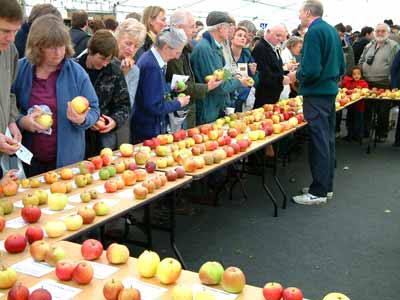The apple is the fruit of the most widely cultivated fruit tree in the world, said to have originated in Kazakhstan.
The fruit is round and hard with a generally shiny or smooth skin ranging from green or yellow through to bright red. It is said that something around 35 varieties of apple were known to the Romans as recorded by Pliny the Elder in the 1st Century. There arenow thousands of varieties and the flavours, textures and keeping properties vary enormously. Some are best used for cooking, some for eating and some for making ciders and for Calvados. This is often dependent on their acidity and sweetness, or their ability to keep their shape when cooked.
They are on the whole at their best from autumn (US: fall) to spring. According to one reference there are “over 1,545” varieties of apple grown in the world - a strange figure to have reached. As a rule of thumb, green apples are generally cooking apples, as are most apples with very smooth skins; yellow are dual-purpose cooking and eating apples; red and russet are sweet, eating apples, as are rough-skinned apples. Striped apples may be either.
In England a huge number of varieties have been raised specifically for purposes of eating or for different culinary uses. Elsewhere in Europe and in the United States more work has gone into raising dual-purpose varieties which can be used for both purposes. Most of these apples do not quite suit the British palate, which has become accustomed to harder, brighter flavours in eating apples. American and European apples are slightly mealy by English standards.
